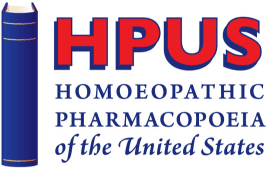Submitting a Monograph
Guidelines for Clinical Verification
Approved July 2020
1. Forward
The aim of this guideline is to transparently and accurately define the roles of different types of clinical data in the monograph approval process. The monograph review process focuses primarily on drug discovery information about the Investigational Homeopathic Medicinal Product (IHMP) derived from historical or modern provings, toxicological data, and data from generally accepted homeopathic literature to determine eligibility for the Homeopathic Pharmacopeia of the United States (HPUS). If drug discovery data from these sources is insufficient to establish a reasonable understanding of the safety and potential utility of the IHMP, additional drug discovery information and/or clinical data may be required by the Homeopathic Pharmacopoeia Convention of the United States (HPCUS) for monograph approval. The requirements for the quality and quantity of clinical data for new monographs are described in these guidelines. Sufficiency of data for monograph approval will be determined on a case-by-case basis during the monograph review process by the HPCUS.
When clinical data is included in any new monograph submissions, HPCUS monograph reviewers are instructed to ensure the following criteria are met:
- Compliance with the Proving design & execution requirements (Sections 2–6)
- Proper analysis to evaluate the sufficiency of the Proving results (Section 7)
- Compliance with all legal, ethical, and publication requirements (Section 8–9)
Monograph reviewers will consider drug discovery information along with additional clinical data, if required, to make a recommendation on the suitability of the new monograph for inclusion in the HPUS.
The following guidelines are presented to help monograph sponsors ensure that the gathering and the preparation of clinical data will meet standards for monograph review by the HPCUS. Additionally, these guidelines are intended to aid HPCUS monograph reviewers to ensure that expected standards of quality are being upheld.
These guidelines contain two specific types of criteria:
- Standard requirements and
- Best practice recommendations
Standard requirements are recognized by language that is definitive, such as “shall,” “must,” or “will include,” while best practice recommendations will use more permissive qualifiers such as “is recommended.” For monograph approval, the submitted data must meet all standard requirements. Deviations from best practice recommendations are permitted but must be accompanied by an explanation by the sponsor. If a monograph sponsor expects any aspect of the clinical data for monograph submission to deviate from these guidelines, the sponsor is advised to submit questions for clarification in writing to the Editor of the HPUS before acquiring data.
Standard requirements – A requirement that must be met for approval of the monograph. Non-compliance with these requirements will likely cause non-approval of a monograph. Any proposed deviation from these requirements must be approved by the PRC. Standards may be periodically updated as needed. Standards contained within these guidelines are recognizable by language that is definitive, such as “shall,” “must,” or “will include;” that implies a required element; placement in the left (unshaded) column of the document; and appearance in the text as regular font (see example at the end of this section).
Best practice recommendation – Suggested method or practices or particular point that will need to be considered. Elements that comply with current best practice recommendations will be considered sufficient for monograph purposes. Elements that fall outside of current best practice recommendations, while not immediately disqualifying, must be accompanied by the reasoning for such a departure to help expedite the monograph review process. Best practices will be updated as community research standards continue to evolve. Best practice recommendations contained within these guidelines are recognizable by language describing the element as “is recommended;” placement in the right (shaded) column of the document; and appearance in the text as italicized font (see example below).
Example of the layout for Standard requirements/ Best practice recommendations:
LEFT (UNSHADED) COLUMN:
Standard requirements
RIGHT (SHADED) COLUMN:
Best Practice recommendations
